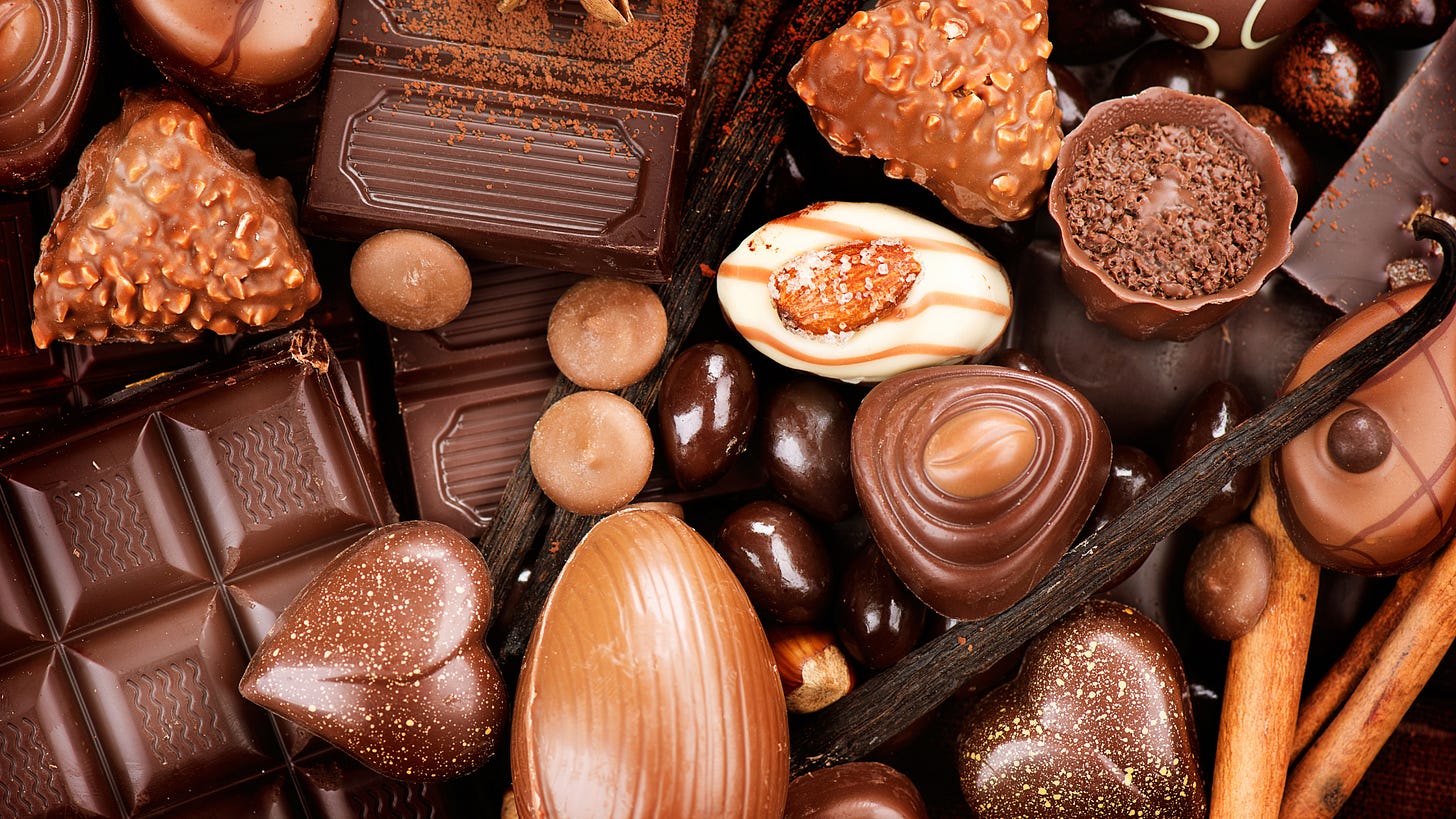Friday Focus: Sweet Talk
Chocolate!
Easter often brings thoughts of chocolate – chocolate eggs, chocolate bunnies, and all sorts of delightful treats. But beyond the sugary goodness, chocolate offers a rich landscape for learning new English words and phrases.
Let's unwrap some of the ways we talk about this popular delight!
1. Describing Chocolate: Vocabulary of Deliciousness 😋🍫😋
When we talk about chocolate, we often use specific words to describe its qualities. Expanding your vocabulary in this area can make your descriptions more vivid and precise.
Types of Chocolate:
Milk chocolate: A sweet chocolate containing milk solids. (Example: "My favourite is creamy milk chocolate.")
Dark chocolate: Chocolate with a higher percentage of cocoa solids and less sugar and milk. (Example: "He prefers the intense flavour of dark chocolate.")
White chocolate: Technically not a true chocolate, it's made from cocoa butter, sugar, and milk solids. (Example: "White chocolate has a very sweet and buttery taste.")
Textures and Flavours:
Smooth: Having an even and agreeable texture. (Example: "This chocolate bar is incredibly smooth.")
Creamy: Rich and smooth, like cream. (Example: "The filling of the egg was wonderfully creamy.")
Rich: Having a full and satisfying flavour. (Example: "Dark chocolate often has a very rich taste.")
Intense: Very strong or concentrated. (Example: "The intense bitterness of the dark chocolate was surprising.")
Sweet: Having a sugary taste. (Example: "Milk chocolate is generally quite sweet.")
Bittersweet: A flavour that is both bitter and sweet. (Example: "Bittersweet chocolate is a good balance of flavours.")
Melty: Easily turning to liquid when heated. (Example: "The melty chocolate on the biscuit was divine.")
Key Vocabulary:
Cocoa solids: The non-fat components of cocoa beans.
Cocoa butter: The fat obtained from cocoa beans.
Percentage: A rate, number, or amount, expressed as so many hundred parts of something.
Texture: The feel, appearance, or consistency of a surface or a substance.
Flavour: The distinctive taste of a food or drink.
Bitterness: A sharp, pungent taste; not sweet.
Divine: Extremely good, excellent.
Try this: Can you describe your favourite type of chocolate using some of these words? What other words could you use to describe the taste or texture of food?


